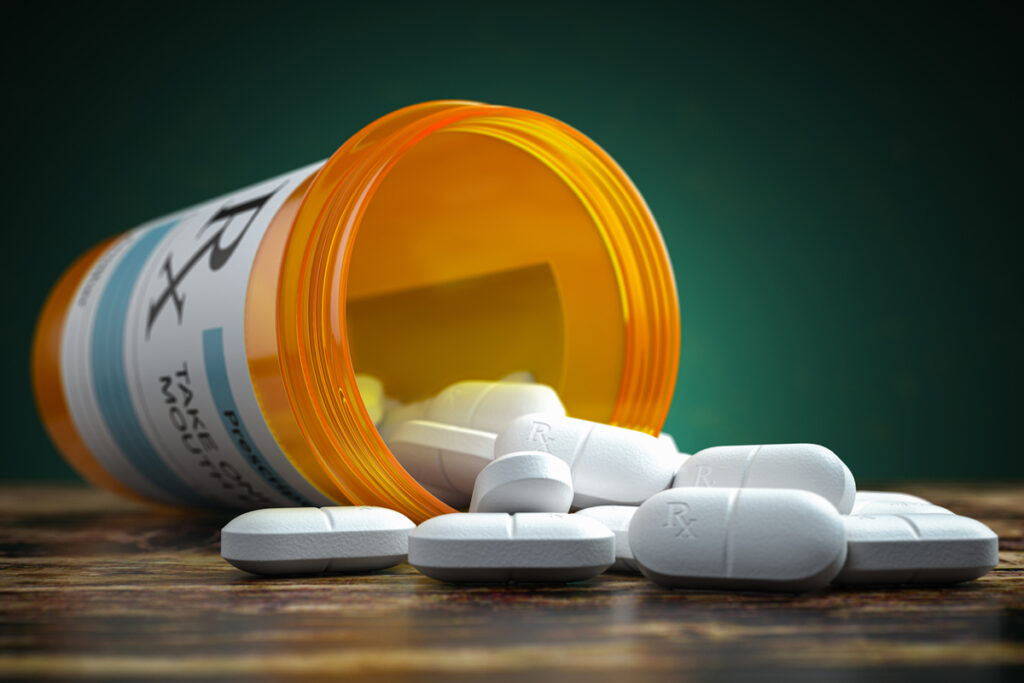Last year brought its share of challenges. Finding solutions is the hard work awaiting everyone in the healthcare community this year.
Editor’s note: The following is the second part of a two-part series. See Part 1
March 2023 – The Journal of Healthcare Contracting

2022 presented all kinds of challenges for providers, patients and public health professionals. No doubt many of those challenges will linger in 2023, and new ones will arise. However, researchers, providers, public health professionals, lawmakers – and supply chain leaders – can be expected to keep working through the tough issues facing them. In the second part of a series, JHC examines the following issues:
- Remote patient monitoring
- Climate change
- Opioids
Remote patient monitoring: Preferred by many, but glitches remain
Remote patient monitoring (RPM) continued to grow in 2022, largely because of technology advances and the preferences of patients, doctors and payers. The market for RPM was expected to reach $6.42 billion by 2030, an 18.64% compound annual growth rate during the forecast period 2022-2030, according to market research firm Market Research Future®. But the work of weighing costs against potential health benefits was expected to continue in 2023 and beyond.
COVID-19 boosted demand for remote patient monitoring services, as patients found it difficult to attend healthcare facilities and undergo hands-on medical evaluations, according to Market Research Future. The pandemic experience prompted investment in cutting-edge technological solutions to assist with managing medications, tracking disease symptoms and remotely monitoring vital signs. Expect demand to increase globally in the upcoming years, the firm said.
Another factor leading to growth in remote monitoring is the expected increase in the number of people with chronic conditions, predicted Forrester. A quarter of U.S. adults will be monitored remotely for chronic conditions. Weight scales, pulse oximeters, blood glucose meters, blood pressure monitors, heart monitors, and wearables were expected to improve clinical prognosis and help patients overcome socioeconomic hurdles, such as lack of transportation.
But remote patient monitoring comes with its own set of glitches, including the potential for data breaches and worries about data privacy. And then there’s the difficulty of integrating patient-generated health data into the physician office EMR.
At its 2022 Annual Symposium, the American Medical Informatics Association reported the results of an EHR vendor survey dealing with the challenges of integrating patient-generated health data (PGHD) – such as that gathered via remote patient monitoring – with the EHR. Factors contributing to the difficulty of making such data actionable included:
- Lack of regulations and industry standards. Disparities exist among EHRs, devices and applications, according to survey respondents.
- Patient technology hurdles. Technical and data literacy must be considered for the target population. Do they have access to broadband Internet? Are they proficient in using monitoring devices (which can be challenging for those with multiple devices, or those with multiple chronic illnesses and who are often older)?
- Manual data entry and lack of analytics. Automated data entry is preferred.
- Lack of care delivery models. Responsibility for the data is needed and it needs to be tied to health outcomes to select the most appropriate data type and device to create value, said survey respondents. But national standards around care models for patient-generated health data are lacking.
Challenges aside, the EHR survey respondents listed factors that can contribute to the success of remote monitoring. They included:
- Organizational support and readiness, i.e., consistent processes on how to leverage PGHD and gain buy-in across the enterprise.
- Clinical champions to advocate and champion the use of remote monitoring.
- Targeted delivery model. PGHD needs to be tied to a clinical focus (e.g., congestive heart failure or hypertension), so that data and devices can be selected that are appropriate for specific clinical outcomes.
- Data governance. Protocols and triggers need to be incorporated into the EHR to encourage patient self-management and clinician decision making. In addition, analytics are needed to eliminate “noise” in the data collected, and decisions need to be made as to how data will be analyzed over time.
- Interoperability. Data needs to be exchanged seamlessly among separate organizations, systems and sources.
- Technical support, particularly support for patients. Support ought to be provided by a technical person from the clinic or organization, the device manufacturer, or outsourced. (Clinical staff, such as RNs, are not the best fit for this role.)
- Economic viability. The use of PGHD needs to be incorporated into the business model of the organization to demonstrate revenue generation or cost-savings.
Climate change: It’s about health

The healthcare community is embracing its role in helping address climate change.
Hurricanes, floods, wildfires and extreme heat caught the world’s attention in 2022 and will most likely do so in 2023. But amidst the gloomy forecast lay a bright spot: By the end of 2022, the healthcare community appeared to be embracing its role in helping address climate change.
According to the World Health Organization, climate change threatens the essential ingredients of good health – clean air, safe drinking water, nutritious food supply and safe shelter. Between 2030 and 2050, it is expected to cause approximately 250,000 additional deaths per year from malnutrition, malaria, diarrhea and heat stress. Areas with weak health infrastructure – mostly in developing countries – will be the least able to cope without assistance.
In the weeks leading up to this past November’s climate talks in Egypt at the 27th Conference of the Parties of the UNFCCC (COP27), WHO made a strong case that health should be front and center during the climate change negotiations.
“Our health depends on the health of the ecosystems that surround us, and these ecosystems are now under threat from deforestation, agriculture and other changes in land use and rapid urban development,” said Dr Tedros Adhanom Ghebreyesus, WHO Director-General. The direct damage costs to health (i.e., excluding costs in agriculture and water and sanitation), is estimated to be between US $2–4 billion per year by 2030.
The combination of these factors means the impact on human health is likely to accelerate. “But there is room for hope, particularly if governments take action now to honour the pledges made at Glasgow in November 2021 and to go further in resolving the climate crisis,” he said.
Closer to home, in June, the American Medical Association adopted a policy declaring climate change a public health crisis. The policy called for AMA to advocate for limits on global warming to no more than 1.5 degrees Celsius, reduction of U.S. greenhouse gas emissions aimed at carbon neutrality by 2050, and support of rapid implementation and incentivization of clean energy solutions and significant investments in climate resilience through a climate justice lens.
Three months after AMA‘s announcement, the American College of Physicians – which represents 160,000 members – released a position paper on environmental health. “The quality of the environment can contribute to common diseases, such as stroke, heart disease, asthma and cancer,” ACP wrote in its paper. “Interventions such as reducing air pollution and water contamination, providing protection from ultraviolet radiation, and mitigating climate change can improve health outcomes for persons with communicable and noncommunicable diseases.”
In June, 61 of the largest U.S. hospital and health sector companies responded to the Biden Administration’s Health Sector Climate Pledge, committing to reduce greenhouse gas emissions 50% by 2030. That’s a positive step, as the healthcare sector accounts for 8.5% of U.S. emissions, according to The White House. The commitments represent over 650 hospitals and thousands of other providers across the country.
Opioids: Fentanyl is the biggest problem

Opioid addiction remains a painful part of life today and no doubt will remain so in 2023. Healthcare professionals have learned much about the problem and have reduced prescriptions for legal pain medications. In fact, over the past 10 years, opioid prescribing has been reduced in every state – and nearly 50% nationally, according to the American Medical Association. But their efforts will be challenged by manufacturers and distributors of illegal synthetic opioids, especially fentanyl.
Healthcare professionals have learned much about opioid use disorder. But their efforts will be challenged by manufacturers and distributors of illegal synthetic opioids, especially fentanyl.
More than 932,000 people have died since 1999 from a drug overdose, reports the CDC. In 2020, 91,799 drug overdose deaths occurred in the United States, 75% of which involved an opioid. Provisional data from CDC’s National Center for Health Statistics indicated there were an estimated 107,622 drug overdose deaths in the United States during 2021.
In November, the CDC released updated and expanded recommendations for clinicians regarding pain care. The 2022 Clinical Practice Guideline addresses the following areas: 1) determining whether to initiate opioids for pain, 2) selecting opioids and determining opioid dosages, 3) deciding duration of initial opioid prescription and conducting follow-up, and 4) assessing risk and addressing potential harms of opioid use.
“We’ve been able to improve and expand our recommendations by incorporating new data with a better understanding of people’s lived experiences and the challenges they face when managing pain and pain care,” Debbie Dowell, MD, MPH, chief clinical research officer for CDC’s Division of Overdose Prevention, said in a statement.
Despite these positive efforts, however, drug-related overdose and death continue to increase, primarily due to illicitly manufactured fentanyl and fentanyl analogs, according to the AMA. In response to the fentanyl threat, the federal government in April 2021 made federal funding available for purchase of rapid fentanyl test strips. The strips can be used to determine if drugs have been mixed or cut with fentanyl, providing people who use drugs and communities important information about fentanyl in the illicit drug supply so they can take steps to reduce the risk of overdose.
Despite the efforts of providers, lawmakers and communities, the fight against fentanyl will no doubt continue to be fierce in 2023.
